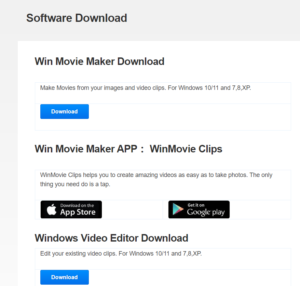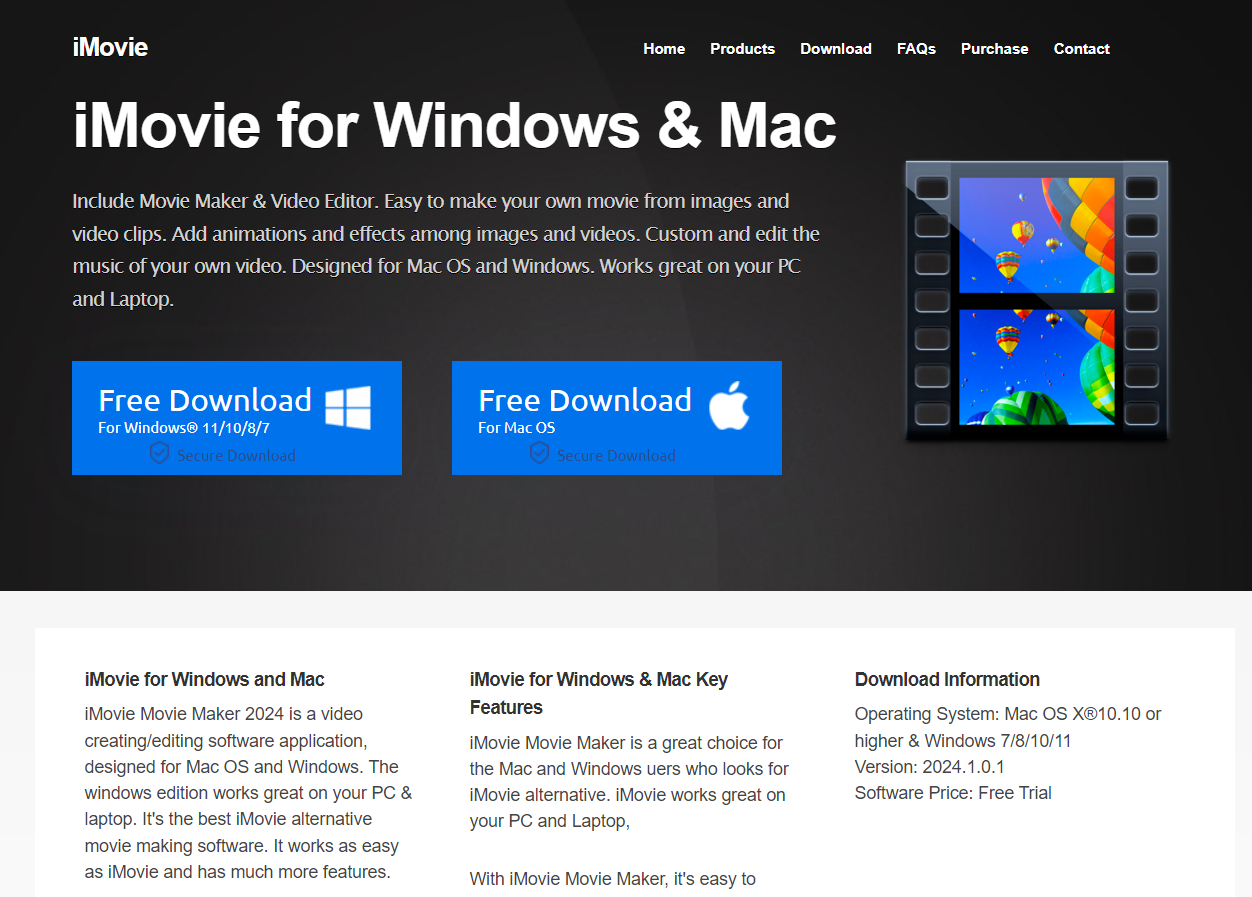Mastering iMovie: A Comprehensive Guide to Creating Stunning Videos
iMovie, Apple’s powerful yet user-friendly video editing software, has revolutionized the way we create and share visual stories. Whether you’re a novice venturing into video editing or a seasoned professional looking to streamline your workflow, iMovie offers a plethora of features that can help you produce high-quality videos with ease. This guide will walk you through the essential aspects of iMovie, offering tips and tricks to enhance your editing skills and create stunning visual content.
Introduction to iMovie
Video editing has become an indispensable skill in today’s digital age, with content creation at an all-time high. iMovie, available exclusively on Apple devices, stands out as one of the most accessible and efficient tools for video editing. With its intuitive interface and robust features, iMovie makes it possible for anyone to create professional-quality videos without the steep learning curve associated with more complex software.
Getting Started with iMovie

Downloading and Installing iMovie
To get started with iMovie, you first need to download and install the application from the App Store. iMovie comes pre-installed on new Mac computers and is also available for download on iPhones and iPads. Once installed, launch the application and familiarize yourself with the interface.
Understanding the iMovie Interface
The iMovie interface is designed to be user-friendly, with a clean layout that includes the Project Library, the Media Library, and the Preview Window. The Project Library is where you can manage and organize your video projects. The Media Library stores all your imported videos, photos, and audio files. The Preview Window allows you to view your video edits in real time.
Creating Your First Project
To create a new project, click on the “Create New” button in the Project Library and select “Movie.” Choose a theme if desired, although starting with a blank project offers more flexibility. Name your project and click “OK” to begin editing.
Importing Media into iMovie
Importing Videos and Photos
Importing media into iMovie is a straightforward process. Click on the “Import Media” button in the Media Library and select the files you want to use. You can import videos, photos, and audio files from your computer, external drives, or directly from your iPhone or iPad.
Organizing Your Media
Once imported, it’s essential to organize your media for easy access during editing. Create folders and use descriptive names to categorize your files. This organization will save you time and streamline your workflow.
Editing Basics: Cutting, Trimming, and Splitting
Cutting and Trimming Clips
Cutting and trimming are fundamental editing skills in iMovie. To trim a clip, select it in the timeline, then drag the edges to shorten or lengthen it. To cut a clip, place the play head where you want to make the cut and press Command+B. This will split the clip into two separate segments.
Splitting Clips
Splitting clips allows you to remove unwanted sections or insert transitions and effects between segments. Simply place the play head at the desired split point and use the Command+B shortcut to divide the clip.
Enhancing Your Videos with Effects and Transitions
Adding Transitions
Transitions smooth the flow between different clips, adding a professional touch to your videos. To add a transition, click on the “Transitions” tab in the Media Library and drag your chosen transition to the timeline between two clips.
Applying Effects
iMovie offers a variety of effects to enhance your videos, such as color correction, filters, and stabilization. Select a clip in the timeline, click on the “Video Overlay Settings” button, and choose the desired effect from the menu.
Incorporating Audio into Your Project
Adding Background Music
Background music can set the tone for your video and enhance the viewing experience. Import your chosen audio file into the Media Library, then drag it to the timeline beneath your video clips. Adjust the volume and fade-in/fade-out effects as needed.
Recording Voiceovers
Voiceovers add a personal touch and can provide narration or commentary. To record a voiceover, click on the “Record Voiceover” button in the toolbar, position the play head where you want to start and begin recording. Stop the recording when finished, and the voiceover will appear in the timeline.
Advanced Editing Techniques

Using Green Screen Effects
Green screen effects allow you to change the background of your video, creating a more dynamic and engaging visual experience. To use this feature, record your subject against a green screen, then import the footage into iMovie. Click on the “Video Overlay Settings” button, select “Green/Blue Screen,” and adjust the settings to blend the background seamlessly.
Creating Picture-in-Picture Videos
Picture-in-picture (PiP) videos are useful for tutorials, presentations, and vlogs. To create a PiP effect, import the main video and the overlay video into the timeline. Select the overlay video, click on the “Video Overlay Settings” button, and choose “Picture-in-Picture.” Resize and position the overlay as desired.
Exporting and Sharing Your Video
Exporting Your Project
Once you have finished editing, it’s time to export your project. Click on the “File” menu, select “Share,” and choose “File.” Adjust the resolution, quality, and compression settings to match your desired output. Click “Next,” name your file, and select the export location.
Sharing on Social Media
iMovie for Mobile: Editing on the Go
iMovie on iPhone and iPad
iMovie’s mobile version offers many of the same features as the desktop version, allowing you to edit videos on the go. Download iMovie from the App Store, and use the touch interface to cut, trim, and add effects to your clips.
Syncing Projects Across Devices
With iCloud, you can sync your iMovie projects across all your Apple devices. This feature allows you to start editing on your iPhone, continue on your iPad, and finalize your project on your Mac.
iMovie Tips and Tricks
Keyboard Shortcuts for Efficiency
Learning keyboard shortcuts can significantly speed up your editing process. Some essential shortcuts include Command+B for splitting clips, Command+Z for undo, and Command+C and Command+V for copy and paste.
Using Themes and Templates
iMovie offers various themes and templates that can give your projects a professional look. Experiment with different themes to find one that suits your video’s style and tone.
Troubleshooting Common Issues
Dealing with Lagging and Crashes
If iMovie is lagging or crashing, try closing other applications to free up system resources. Ensure your software is up to date, and consider upgrading your hardware if you frequently encounter performance issues.
Fixing Audio Sync Problems
Audio sync problems can be frustrating. To fix them, ensure that your audio and video files have the same frame rate. If issues persist, try re-importing the media or using an external audio editing tool to align the audio manually.
FAQs
How do I import media into iMovie?
To import media, click the “Import Media” button in the Media Library, then select the files from your computer or external devices.
Can I use iMovie on non-Apple devices?
iMovie is exclusive to Apple devices and cannot be used on non-Apple platforms.
How can I add text to my video in iMovie?
To add text, click on the “Titles” tab in the Media Library, choose a style, and drag it to the timeline above the video clip.
What is the best export setting for YouTube?
For YouTube, export your video in 1080p resolution with high quality and fast compression settings.
Can I edit 4K videos in iMovie?
Yes, iMovie supports 4K video editing on compatible devices.
How do I update iMovie to the latest version?
Update iMovie through the App Store by navigating to the “Updates” tab and clicking “Update” next to iMovie.
Conclusion
Mastering iMovie can open up a world of creative possibilities, allowing you to produce professional-quality videos with ease. By understanding the basics, exploring advanced features, and utilizing helpful tips and tricks, you can transform your raw footage into engaging and polished visual stories. Whether you’re creating content for personal enjoyment or professional purposes, iMovie is a powerful tool that can help you achieve your video editing goals.

